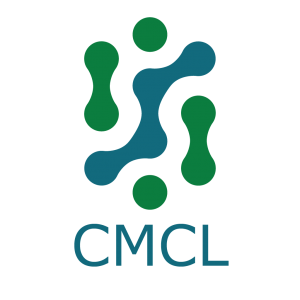User Stories
This page details the user stories investigated within the SimDOME project. For more details, select the links for each user story to view the longer report.

A detailed stochastic investigation on morphology and fractal dimension of carbon black aggregates
Carbon Black (CB) is a nano-sized material of the form of colloidal particles that are produced by incomplete combustion or thermal decomposition of gaseous or liquid hydrocarbons. Some of the CB applications are tyre, rubber, plastic or coating industries where specific particle size distribution (PSD), surface area or even morphology of produced particles are required. This user story describes how morphology of CB particles, in form of 3D structures of CB aggregates and their fractal dimensions, can be calculated using CMCL’s kinetics™ software.
Read more here.

Exhaust after-treatment (EAT) models for vehicular applications
Exhaust after-treatment (EAT) devices are essential for Internal Combustion Engines (ICEs) to mitigate toxic gaseous and particulate emissions in compliance with the legal emission standards. Proper sizing and catalyst formulation are needed to ensure effective performance over a wide range of operating conditions with consideration of mechanical, volumetric and financial constraints. This user story demonstrates the capability of models of catalytic converters and particulate filters, two major types of after-treatment devices, developed within CMCL’s kinetics™ software.
Read more here.

Automatized simulation of Transient Absorption UV/Vis spectroscopy
Transient absorption (TA) is an important experimental technique to understand the photochemical evolution of a molecule after it absorbs light. A computational support is often required to fully disclose the photochemical evolution of the excited system. This user story tells about the implementations in the academic software COBRAMM that automatize the complex and non-routine calculations needed to simulate a TA spectrum, making fully accessible for non-expert users the possibility of study TA for medium-to-big size chromophore in solution.
Read more here.

Gas-Phase synthetized nanoparticles are gaining widespread popularity for the industrial use thanks to their enhanced properties with respect to a non-nanostructured material. NanoDome has been designed with the idea to offer a numerical suite which can be used as a Black-Box tool in the industrial context, offering three simulation methods of increasing complexity (MoM, PBM and CGMD). This user story describes NanoDOME’s capability to evaluate the most relevant nanoparticle (NP) properties (diameter, number density, fractal dimension, internal structure etc) using a standalone, a CFD-linked or a reactor network (CFD-coupled) method.
Read more here.

Back-to-back comparison of experimental and computed molecular spectra
We realized a prototype for measuring absorption and fluorescence emission spectra of molecules, with a common and integrated software platform for the simultaneous simulation, visualization and post-processing of electronic spectra by COBRAMM.
Read more here.

Predicting the crystal size distribution of NMC precursor particles produced via wet-phase synthesis
Due to their high capacity and thermal stability, nickel-manganese-cobalt (NMC) based materials are often used in the manufacturing of Li-ion batteries cathode. The electrochemical performances of NMC-based batteries are known to strongly depend on the properties of NixMnyCoz(OH)2 precursor particles (e.g. size, morphology and porosity), which constitute the first solid product in the value chain of cathode materials produced via co-precipitation. This user story describes how advanced numerical models can help to identify process conditions that allow to produce NMC precursor particles that meet specific size requirements.
Read more here.

The focus here is on reactive crystallization or coprecipitation, where a solid phase is formed in a liquid, thanks to a chemical reaction. Solid particles are formed by nucleation and subsequently grow, aggregate and break, interacting with the continuous liquid phase. Different computational tools are employed based on the open-source CFD code OpenFOAM and the commercial code Ansys CFD Fluent. The methodology is eventually demonstrated for a real practical case: the coprecipitation of Ni, Mn, Co hydroxides to produce NMC cathodes for lithium ions batteries.
Read more here.
